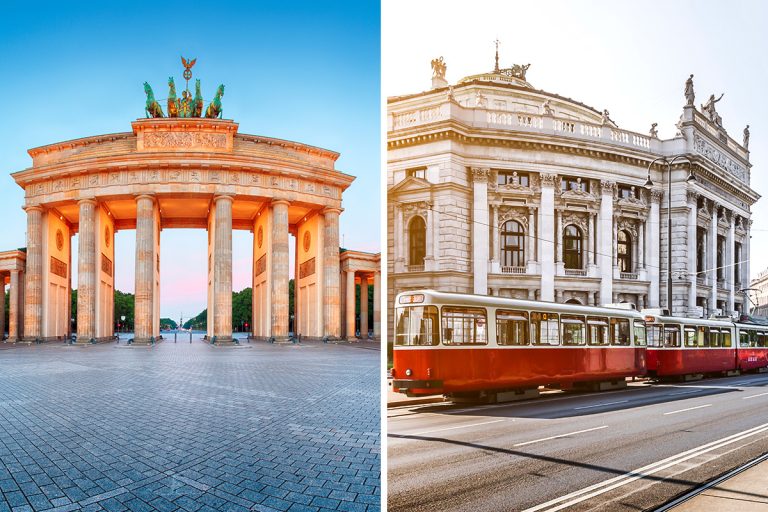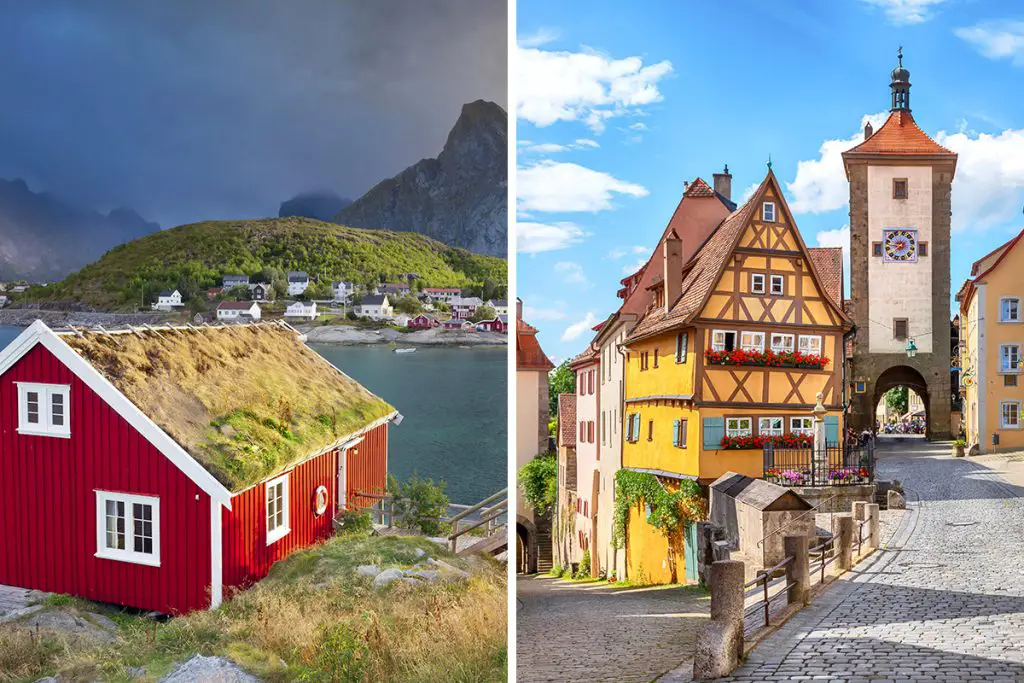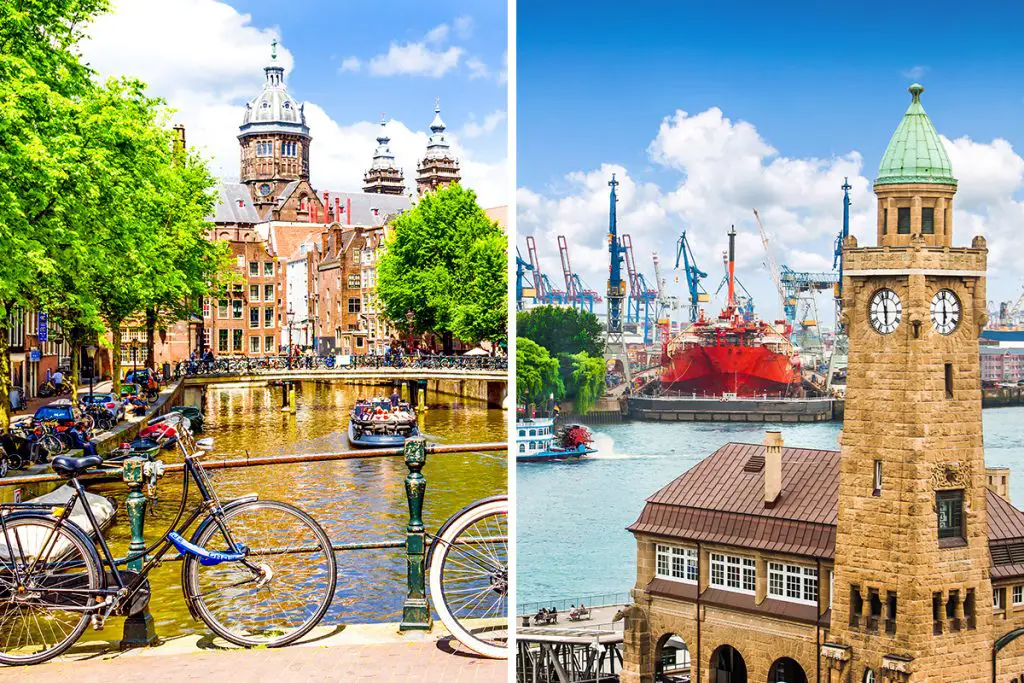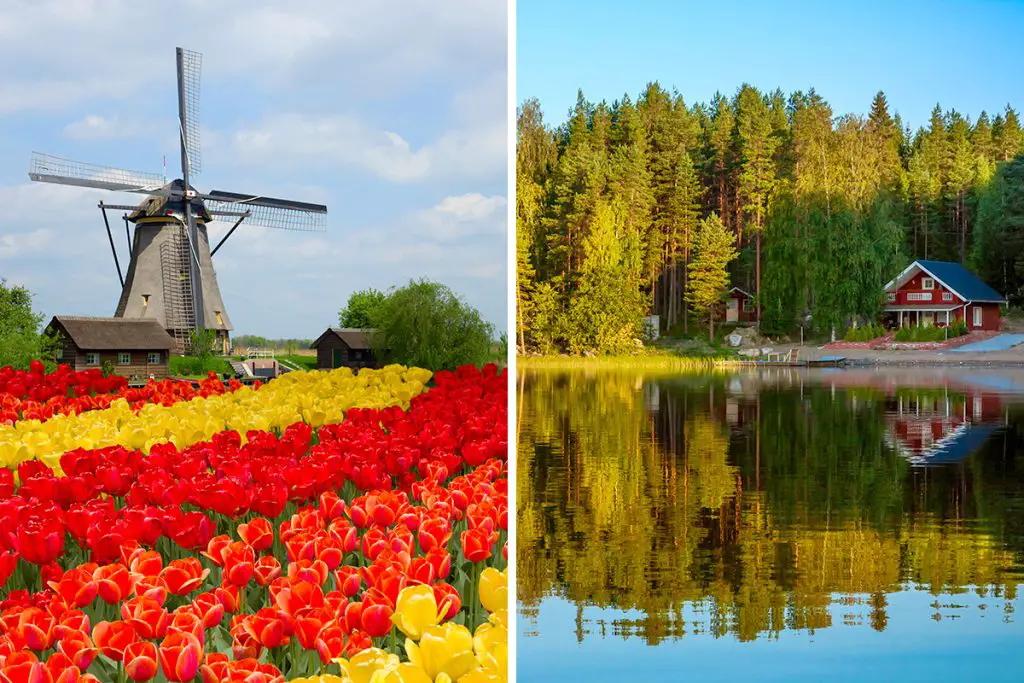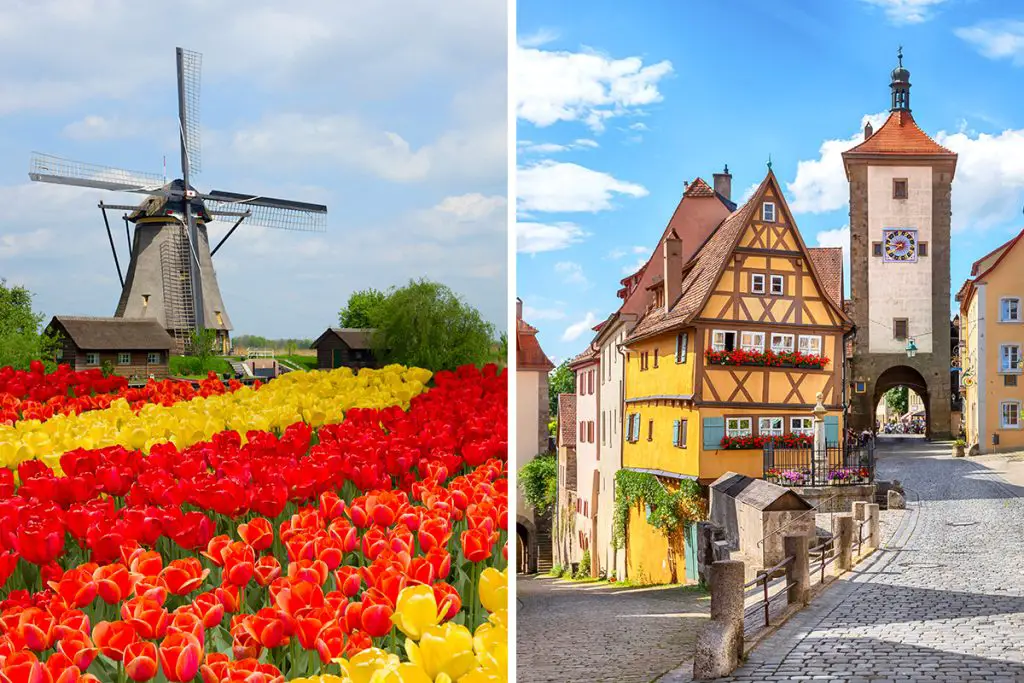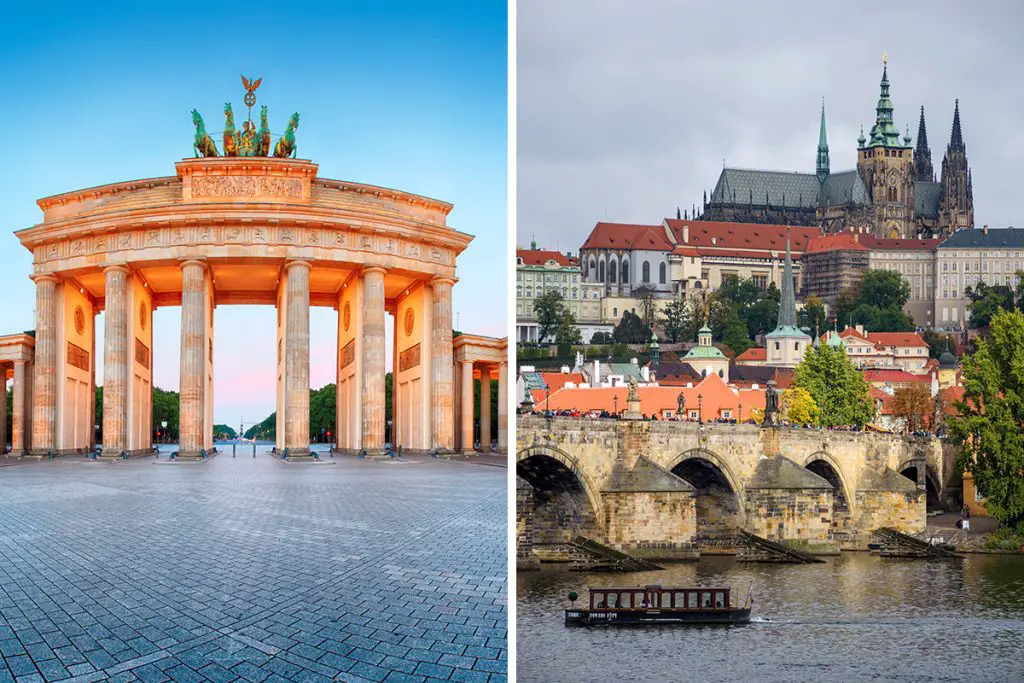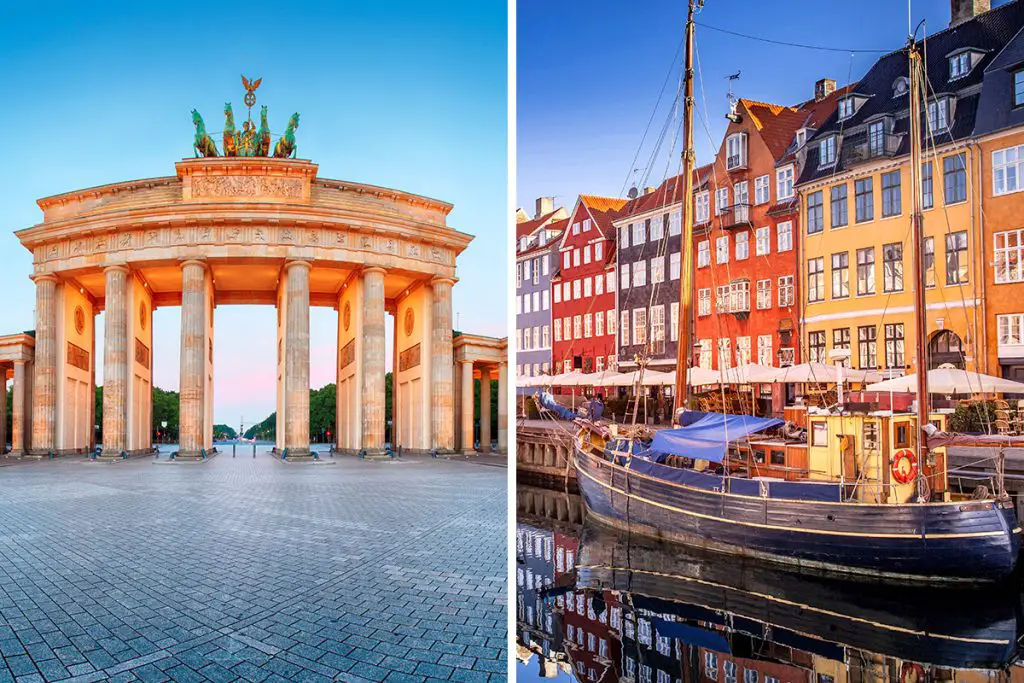Dive into this comparison and uncover the layers of history and culture that each city holds. Each place is a treasure trove of stories and experiences waiting for you to explore. Are you ready to begin this fascinating journey?
History & Culture
Berlin and Vienna are both steeped in history, offering a different perspective of Europe’s past and a unique blend of culture.
Berlin, once divided by the infamous Berlin Wall, has witnessed crucial moments in global history. You’ll notice the city’s history echoed in its architecture – from the modern Bundestag to the historical Brandenburg Gate.
Berlin’s culture is very much alive, it pulses in the lively neighborhoods, and it thrives in the art galleries and underground music scene. It is a city that has learned to embrace its past while eagerly looking toward the future.
Vienna, on the other hand, takes you on a journey back to an era of emperors and empires. The capital of Austria is a living testimony of a regal past, where the grandeur of the Habsburg monarchy still influences the city’s fabric.
Vienna’s culture is an exciting blend of timeless tradition and innovative modernism. It’s the city where classical music and elegant waltzes dance in harmony with cutting-edge arts and forward-thinking ideas.
When comparing the two, Berlin offers you a raw and open view of history and a culturally diverse, vibrant environment. Vienna, in contrast, wraps you in its royal past and sophisticated elegance, coupled with a continuous dedication to innovation and progress.
In summary, whether it’s the historic crossroads of Berlin or Vienna’s imperial charm, each city offers a rich tapestry of history and culture. They each provide a unique lens through which to view and appreciate Europe’s past and present. Your choice ultimately depends on what you find more appealing: the dynamic resilience of Berlin or the enduring grandeur of Vienna. What’s your preference?
Attractions & Activities
When you’re exploring new places, attractions and activities play a huge role in shaping your experience. Berlin and Vienna, each with their unique flavor, offer a wide range of sights and things to do that can enrich your visit beyond measure.
In Berlin, history enthusiasts will find themselves engrossed in sites like the Berlin Wall Memorial and Checkpoint Charlie. Meanwhile, the stunning architecture of Berlin Cathedral and Charlottenburg Palace will surely amaze you. Nature lovers can enjoy a leisurely walk in the vast Tiergarten or marvel at the animals in Berlin Zoological Garden.
Vienna, with its imperial past, presents a different set of attractions. Marvel at the architectural grandeur of Schönbrunn Palace, or visit the historic Belvedere Palace, home to an impressive collection of Austrian art.
The St. Stephen’s Cathedral, a gothic masterpiece, is a must-visit, as is the Vienna State Opera for all the music lovers out there. Don’t miss a chance to ride the iconic Giant Ferris Wheel in Prater Park for a spectacular view of the city.
In Berlin, the activities center around exploring the city’s rich history and modern city life, whereas Vienna invites you to immerse yourself in its royal heritage and vibrant arts scene. Both cities provide you with a great mix of history, culture, architecture, and natural beauty.
In conclusion, whether it’s Berlin’s poignant historical sites and modern urban spaces or Vienna’s majestic palaces and vibrant arts scene, both cities present a multitude of attractions and activities. The choice between Berlin’s history-laden attractions and Vienna’s royal opulence boils down to personal preference. Which city’s attractions are calling out to you?
Eating, Drinking & Nightlife
The food, drinks, and nightlife in a city can shape your experience and create unforgettable memories. Both Berlin and Vienna have vibrant culinary scenes and exciting nightlife that add to their overall appeal.
When it comes to eating, Berlin offers a multicultural cuisine that reflects its diverse population. The city’s signature dish is Currywurst, a delightful mix of steamed and fried pork sausage seasoned with curry ketchup. Berlin is also famous for its street food culture, with the Döner Kebab being a popular choice among locals and visitors alike.
In Vienna, the dining scene is defined by traditional Austrian cuisine, with dishes like Wiener Schnitzel and Tafelspitz being culinary highlights. Also, you cannot miss the city’s coffeehouse culture, where enjoying a cup of coffee and a slice of Sacher Torte is a must-do experience.
Berlin’s drinking culture is lively, with a particular focus on beer and local spirits like Berliner Luft. You can find a wide range of bars throughout the city, each with their unique vibe. Vienna’s drinks scene is more centered around wine, especially the local white wines which are often enjoyed in traditional wine taverns called ‘Heurigen’.
As for nightlife, Berlin is renowned worldwide for its clubbing scene with venues like Berghain leading the way. It’s a city that never sleeps, offering a wide range of experiences for night owls.
Vienna, while having a more subdued nightlife in comparison, offers a mix of classical music concerts, bars, and modern dance clubs, providing a different but equally enjoyable night out.
In summary, Berlin and Vienna offer diverse food, drink, and nightlife experiences. Whether you prefer the multicultural culinary delights and vibrant nightlife of Berlin or the traditional Austrian cuisine and classical elegance of Vienna’s nightlife, there’s something for everyone in both cities. So, do you want to sample Berlin’s street food or enjoy a leisurely coffee in Vienna’s historic cafes?
Shopping
Shopping can be an exciting part of any travel experience, offering you a chance to discover local products, souvenirs, and fashion. Both Berlin and Vienna provide unique shopping experiences that cater to different tastes and budgets.
Berlin’s shopping scene is as diverse as the city itself. You’ll find an eclectic mix of independent boutiques, designer shops, and quirky vintage stores. Check out Hackescher Markt for unique fashion and accessories or head to Kurfürstendamm, Berlin’s most famous shopping street, for high-end brands.
Vienna, on the other hand, offers a blend of traditional and modern shopping experiences. For luxury shopping, Kohlmarkt and Graben are the go-to places with high-end boutiques and international brands. If you’re after traditional Austrian products, the Naschmarkt flea market is a great place to find local handicrafts, antiques, and gourmet food items.
In summary, whether you’re after the eclectic mix of shops in Berlin or the traditional luxury shopping experience in Vienna, both cities offer unique and enjoyable shopping experiences. So, are you ready to hunt for vintage treasures in Berlin’s markets or explore the high-end boutiques of Vienna?
Accommodation
Choosing the right place to stay can make a big difference to your travel experience. Berlin and Vienna both offer a wide range of accommodations to suit various needs and budgets.
In Berlin, you’ll find everything from luxury hotels in the city center, like the Adlon Kempinski near Brandenburg Gate, to budget-friendly hostels in trendy neighborhoods such as Kreuzberg and Friedrichshain. The city also has a wide range of vacation rentals and serviced apartments, particularly in the Mitte district, perfect for those looking for a home away from home.
Vienna also boasts a broad selection of accommodations. Luxury seekers can choose from grand hotels like Hotel Sacher, famous for its namesake chocolate cake. For budget travelers, there are numerous hostels and guesthouses in districts like Neubau and Mariahilf. Just like Berlin, Vienna also offers a good selection of holiday rentals, especially in the Innere Stadt (inner city).
In summary, both Berlin and Vienna cater to a wide spectrum of travelers with their range of accommodations. Whether you prefer a luxurious hotel room with a view, a budget-friendly hostel, or a cozy holiday rental, both cities have you covered. So, where do you see yourself unwinding after a day of exploration?
Family-Friendliness & Children’s Activities
When traveling with the family, especially with kids, you want destinations that are not just interesting but also family-friendly. Both Berlin and Vienna are excellent in this regard, offering a variety of children’s activities and family-oriented attractions.
In Berlin, places like the Natural History Museum with its dinosaur exhibits and the Labyrinth Children’s Museum with its interactive displays are big hits among kids. The city also boasts numerous parks and playgrounds, like the sprawling Tiergarten and the Volkspark Friedrichshain, offering ample space for outdoor fun.
Vienna too, offers a host of family-friendly attractions. The Schönbrunn Palace, with its Children’s Museum and Zoo, is a perfect place for a family outing. The Haus des Meeres, an aquarium housed in a WWII flak tower, and the Prater amusement park with its iconic Giant Ferris Wheel are also popular among children.
In summary, both Berlin and Vienna stand out as family-friendly destinations, offering a mix of educational, outdoor, and fun-filled activities for children. So, whether your kids are eager to meet dinosaurs in Berlin or ride the Giant Ferris Wheel in Vienna, both cities promise a memorable family vacation. Which city will be your next family adventure?
Getting There & Getting Around
When planning a trip, considering how you will get to your destination and navigating the city once there is crucial. Luckily, both Berlin and Vienna are well-connected cities with efficient public transportation systems.
Reaching Berlin is relatively straightforward, with two airports, Berlin Brandenburg and Tegel, servicing the city. Berlin Brandenburg Airport is about 11.8 miles (19 kilometers) from the city center.
In terms of getting around, Berlin boasts an extensive public transport system comprising the U-Bahn (underground railway), S-Bahn (city train), trams, and buses. Alternatively, Berlin is also a very bike-friendly city, and renting a bike can be a great way to explore.
On the other hand, Vienna is served by Vienna International Airport, located approximately 12.4 miles (20 kilometers) southeast of the city center. Once in the city, you can use the efficient U-Bahn, trams, and buses to navigate the city. Vienna is also known for its traditional Fiaker horse carriages, which can offer a unique way to sightsee around the city center.
In conclusion, both Berlin and Vienna are easily accessible and offer various convenient options for getting around, from modern trains and buses to bike rentals and even horse-drawn carriages in Vienna. So, are you ready to navigate the underground in Berlin or ride a horse-drawn carriage in Vienna?
Weather
Weather can significantly influence your travel experience. The climates of Berlin and Vienna, while having similarities, also offer unique experiences depending on the time of year you visit.
Berlin experiences a temperate seasonal climate, with moderate to heavy rainfall throughout the year. Summer months, from June to August, are warm with temperatures ranging from 68 to 77°F (20 to 25°C). The winter, particularly from December to February, can be quite cold with temperatures often dropping to 32°F (0°C) or below.
Vienna, on the other hand, has a continental climate. Summers, particularly July and August, can be hot with temperatures often hitting 86°F (30°C). Winters are typically cold and dry, with temperatures in December to February hovering around freezing point, similar to Berlin.
In conclusion, both Berlin and Vienna offer distinctive weather experiences. Whether you prefer the temperate summers and snowy winters of Berlin or the hot summers and dry winters of Vienna, planning your visit according to your weather preference can enhance your travel experience. So, are you packing for a warm summer or a snowy winter?
Safety
Safety is a paramount concern for any traveler. Fortunately, both Berlin and Vienna are generally safe cities with relatively low crime rates.
In Berlin, like in any large city, it’s essential to take usual precautions against pickpocketing, especially in crowded areas like public transportation and tourist hotspots. However, Berlin is well-policed, and help is usually available when needed.
Vienna consistently ranks as one of the world’s safest cities. Violent crimes are infrequent, and petty crimes like pickpocketing are lower than in many other major cities. As always, staying vigilant in crowded tourist areas is recommended.
An additional aspect of safety in both cities relates to road safety. Both Berlin and Vienna have well-structured traffic systems and strictly enforced traffic rules, ensuring a safe environment for pedestrians and cyclists.
In summary, while both Berlin and Vienna are safe cities, maintaining awareness of your surroundings and taking standard precautions can ensure a worry-free visit. So, ready for a secure and exciting adventure?
Cost
Considering the cost is a critical part of planning any trip. Both Berlin and Vienna offer a wide range of experiences that can fit different budgets.
Berlin is known for its relatively low cost of living compared to other major European cities. The average cost of a meal in a mid-range restaurant would be around €20 (approx $24), and a one-way ticket on local transportation costs about €3 (approx $3.6). Accommodation ranges widely, but you can find a decent hotel room for around €80-€120 (approx $96-$144) per night.
Vienna, while slightly more expensive than Berlin, offers good value for your money. A meal at a mid-range restaurant would typically cost around €25 (approx $30), and a one-way ticket for public transport is approximately €2.4 (approx $2.9). For accommodations, you can expect to pay between €100-€150 (approx $120-$180) per night for a standard hotel room.
In conclusion, both Berlin and Vienna can cater to various budgets. Whether you prefer the more budget-friendly options in Berlin or the slightly pricier but still reasonable costs in Vienna, you can find options that suit your budget in both cities. So, which city matches your budget for your next trip?
Which Is Better – Berlin or Vienna?
The moment of decision is at hand. Berlin and Vienna, two vibrant European cities, have been compared across a range of factors. Now, let’s see what conclusions can be drawn.
Looking at history and culture, Berlin stands out with its poignant historical narratives and vibrant art scene. However, Vienna shines with its unique blend of imperial traditions and modern culture. Your choice might depend on your preference: contemporary history and urban art in Berlin, or classical music and Habsburg palaces in Vienna.
When it comes to attractions and activities, both cities are rich with unique experiences. Berlin offers an eclectic mix of historic landmarks, museums, and galleries, while Vienna enchants with its majestic palaces and beautiful gardens. Both offer a plethora of indoor and outdoor activities, so your decision might be driven by your personal interests.
Although neither city boasts a beach, both offer a variety of water-related activities. You can enjoy river cruises in both cities, with the Spree in Berlin and the Danube in Vienna providing unique perspectives of the cities.
If you’re a foodie who loves to experience nightlife, both cities can cater to your taste. Berlin’s cuisine is eclectic and international, while Vienna’s is steeped in Austro-Hungarian traditions. Both cities offer vibrant nightlife, although Berlin is perhaps more renowned for its dynamic club scene.
In terms of shopping, both cities provide an array of options. Berlin is known for its edgy fashion and unique boutiques, while Vienna offers elegant shops and traditional markets.
When considering accommodations, both cities offer a wide range of options to suit different budgets and preferences. Whether you are looking for budget-friendly options or luxurious experiences, both Berlin and Vienna have plenty to offer.
The family-friendliness and children’s activities are commendable in both cities, and the ease of getting there and around is comparable, with excellent public transport networks.
Weather-wise, your preference between a temperate seasonal climate (Berlin) and a hot summer continental climate (Vienna) might sway your decision. In terms of safety, both cities are generally safe with Vienna often ranking among the world’s safest cities. Lastly, while both cities offer good value for money, Berlin might appeal more if budget is a primary consideration.
So, which is better – Berlin or Vienna? The answer truly depends on what you value most in your travel experiences. Berlin might be more appealing if you prefer a more modern, eclectic city with vibrant nightlife and a more budget-friendly price tag. On the other hand, Vienna might be your pick if you appreciate classical culture and imperial history and don’t mind spending a bit more on your experiences. Regardless of your choice, both cities promise unforgettable experiences. So, are you ready to make your choice between these two fascinating cities?

